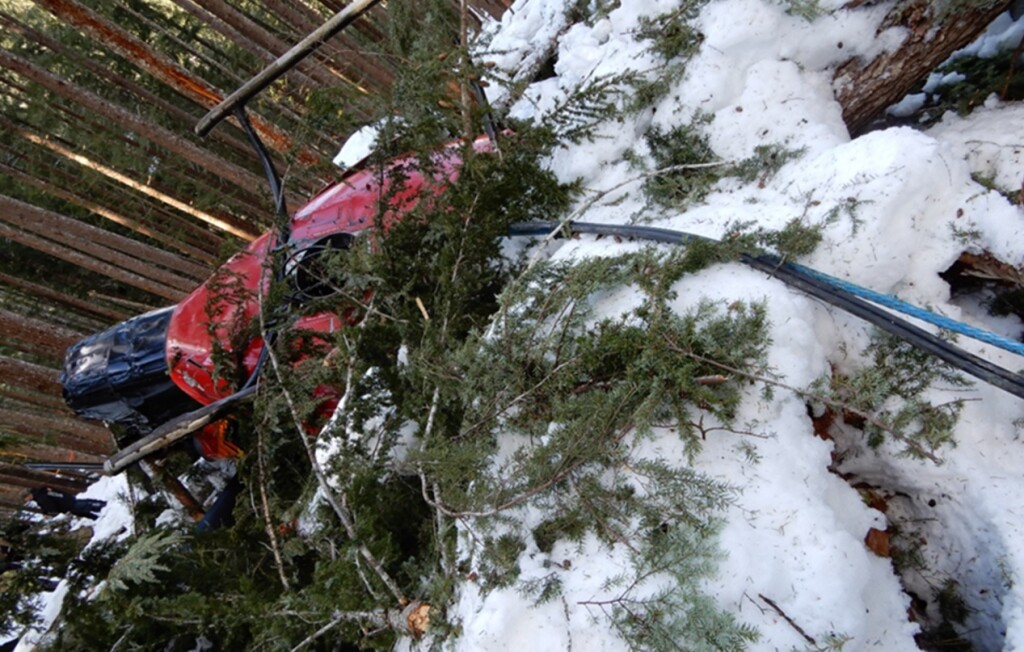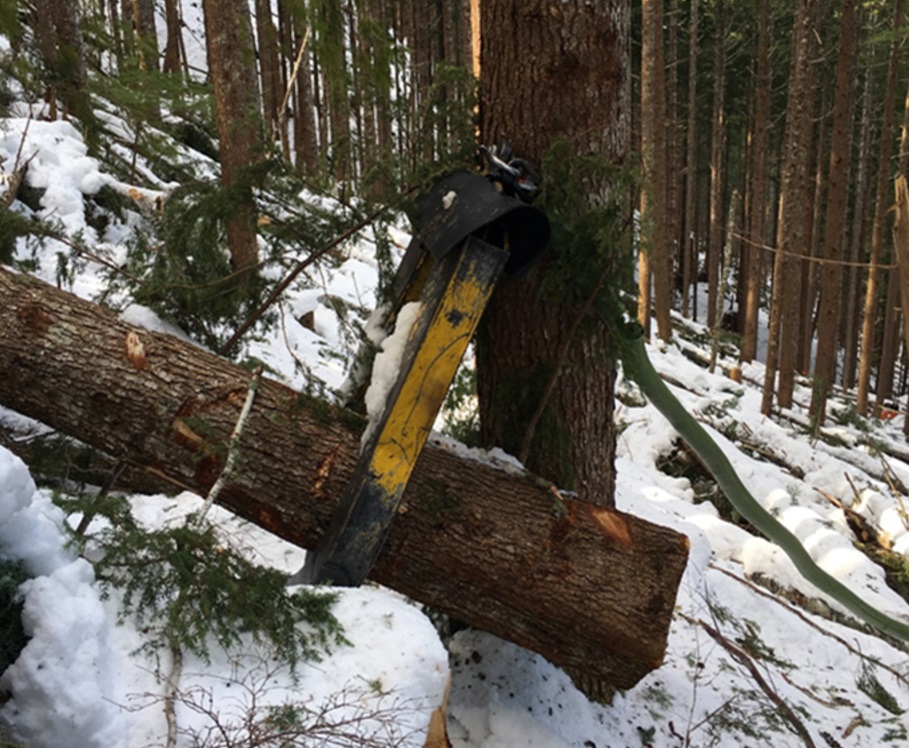Engine Life Limit Exceedance Caused Logging Helicopter Fatal Accident (UH-1B N64RA)
On 8 March 2019 the pilot of restricted category Richards Heavylift Helo Inc (Bell) UH-1B N64RA, registered to Iron Eagle Helicopters, died while conducting Part 133 Helicopter External Sling Load Operations (HESLO) at a logging site near Forks, Washington. After responding to a mayday call of “I’m going down, I’m going down I’m going d…” fellow workers found the helicopter inverted amongst trees 1/4 mile way.

Wreckage of Iron Eagle Bell UH-1B Logging Helicopter N64RA (Credit: NTSB) Note: A blue long line and two black hydraulic hoses can be seen
running uphill to the grapple hook.
The Safety Investigation
The US National Transportation Safety Board (NTSB) safety investigation report was published on the 5 May 2021. The pilot was the owner of Iron Eagle and had 6610 flying hours in total, 729 on type. He was reportedly averaging 30 lifts per flying hour while logging, using a grapple logging system that only requires one person on the ground (vs four for choker logging).
The investigators report that:
Examination of the engine revealed that the gas generator first stage [static] sealing disk had fractured and separated into three major pieces.
Gas Generator Turbine Static Sealing Disc from Honeywell T53 of Iron Eagle Bell UH-1B Logging Helicopter N64RA (Credit: NTSB)
Multiple internal components of the engine were subsequently damaged as a result, including all four turbine rotors and nozzles.
Subsequently, the Honeywell T53-L13B turboshaft engine…
…lost all power, necessitating a forced landing via autorotation. Due to the low altitude and densely tree covered terrain, it is unlikely that the pilot had reaction time to release the load which became entangled in the trees…
The NTSB explain that:
An examination of the first stage sealing disk revealed fracture features consistent with low cycle fatigue.
Cracks in Gas Generator Turbine Static Sealing Disc from Honeywell T53 of Iron Eagle Bell UH-1B Logging Helicopter N64RA (Credit: NTSB)
Fracture Surface Low Cycle Fatigue (LCF) Beach Marks on Gas Generator Turbine Static Disc from Honeywell T53 of Iron Eagle Bell UH-1B Logging Helicopter N64RA (Credit: NTSB)
The overhauled engine was installed into the accident helicopter about 8 months before the accident [2 July 2018]. The sealing disk was installed into the engine at the time of overhaul and had previously accrued 1,067.3 hours and 2,134.6 cycles. Documentation of engine cycles was not accomplished daily. Engine cycles were documented irregularly from July 2, 2018, to September 17, 2018, after which there was no documentation of engine cycles. [however], the helicopter was equipped with an AKV N1/N2 cycle counter.
According to Honeywell SB T53-L-13B-0020 the hour/cycle life limit of the first stage sealing disk is 25,000 hours or 6,900 cycles.
A review of maintenance records and the helicopter’s electronic cycle counter revealed that the sealing disk had exceeded the published life limit of 6,900 cycles. The last documented cycle value was 9,023.13. The cycle counter had recorded 12,023.19 cycles.
NTSB Probable Cause
A total loss of engine power due to the failure of the gas generator sealing disk as a result of the operator’s exceedance of the sealing disk life limits at too low an altitude for the pilot to accomplish a successful autorotation which resulted in the collision with terrain.
Safety Resources
The European Safety Promotion Network Rotorcraft (ESPN-R) has a helicopter safety discussion group on LinkedIn. You may also find these Aerossurance articles of interest:
- UH-1H HESLO Fuel Exhaustion Accident
- Windscreen Rain Refraction: Mountain Mine Site HESLO CFIT
- HESLO Dynamic Rollover in Alaska
- When Habits Kill – Canadian MD500 Accident
- Loss of Control During HESLO Construction Task: BEA Highlight Wellbeing / Personal Readiness
- Shocking Accident: Two Workers Electrocuted During HESLO
- Load Lost Due to Misrigged Under Slung Load Control Cable
- Keep Your Eyes on the Hook! Underslung External Load Safety
- EC120 Underslung Load Accident 26 September 2013 – Report
- Unexpected Load: AS350B3 USL / External Cargo Accident in Norway
- Unexpected Load: B407 USL / External Cargo Accident in PNG
- Load Lost Due to Misrigged Under Slung Load Control Cable
- Fallacy of ‘Training Out’ Error: Japanese AS332L1 Dropped Load
- Helicopter External Sling Load Operation Occurrences in New Zealand
- Maintenance Issues in Fire-Fighting S-61A Accident
- Impromptu Landing – Unseen Cable
- Inadvertent Entry into IMC During Mountaintop HESLO
- HESLO AS350B2 Dropped Load – Phase Out of Spring-Loaded Keepers for Keeperless Hooks
- Unballasted Sling Stings Speedy Squirrel (HESLO in France)
- Engine Failure after Inadvertently Being Put Back into Service Incomplete
- Coking Causes Power Loss: Australian AS350BA
- Fire After O-Ring Nipped on Installation
- Prior Engine Mount Damage Lead to Fatal Aerial Saw Crash
- RCMP AS350B3 Left Uncovered During Snowfall Fatally Loses Power on Take Off
- Loose Engine B-Nut Triggers Fatal Forced Landing
- Fatal Engine Power Loss: Powerline Helicopter Not Modified IAW OEM Recommendations
- UPDATE 10 July 2021: Forced Landing after CAMO Underestimated Operation in Dusty Environments
- UPDATE 7 August 2021: Prompt Emergency Landing Saves Powerline Survey Crew After MGB Pinion Failure
- UPDATE 13 November 2021: Bell 407 Rolls-Royce 250-C47B Uncontained Engine Failure after Bearing Failure






Recent Comments